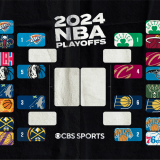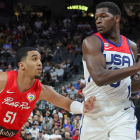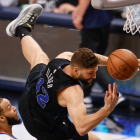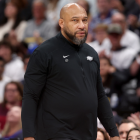With intentional fouling seen as a scourge on the league, the NBA took steps on Tuesday to tweak the strategy. Overall though, the "Hack-a" strategy is not going away just yet. It will just now be slightly harder for teams to implement certain aspects of the strategy.
From the NBA, here are the changes to the rules relating to intentional fouling:
The current rule for away-from-the-play fouls applicable to the last two minutes of the fourth period (and last two minutes of any overtime) - pursuant to which the fouled team is awarded one free throw and retains possession of the ball - will be extended to the last two minutes of each period.
For inbounds situations, a defensive foul at any point during the game that occurs before the ball is released by the inbounder (including a "legitimate" or "natural" basketball action such as a defender fighting through a screen) will be administered in the same fashion as an away-from-the-play foul committed during the last two minutes of any period (i.e., one free throw and possession of the ball).
The flagrant foul rules will be used to protect against any dangerous or excessively hard deliberate fouls. In particular, it will presumptively be considered a flagrant foul if a player jumps on an opponent's back to commit a deliberate foul. Previously, these type of fouls were subject to being called flagrant but were not automatic.
The big takeaways from here are that teams will stop fouling near the end of quarters to get extra offensive possessions and that jumping on a player's back, will result in a flagrant foul not a common foul, like it was in the past. Also, now away-from-the-ball fouls, which resulted in a free throw and possession of the ball, will be called at the end of ALL quarters.
While these aren't sweeping changes, it shows the league is taking steps to make the "Hack-a" strategy less of a drain on actual game play. And perhaps, it will lead to even more changes down the road.






















